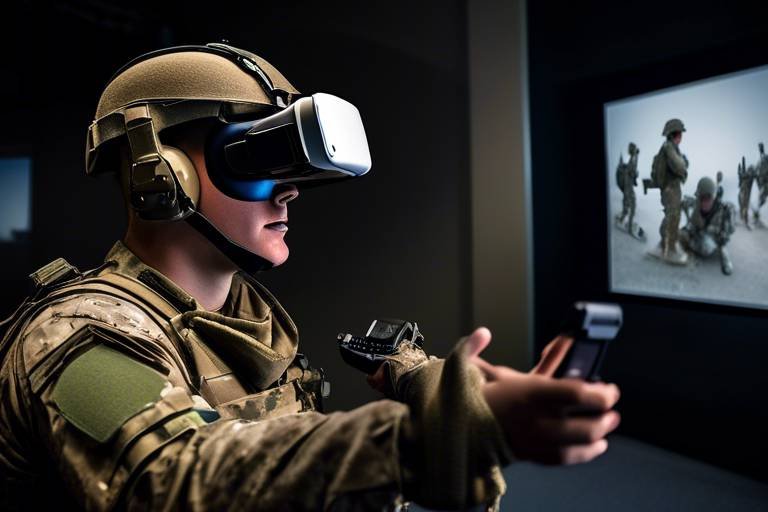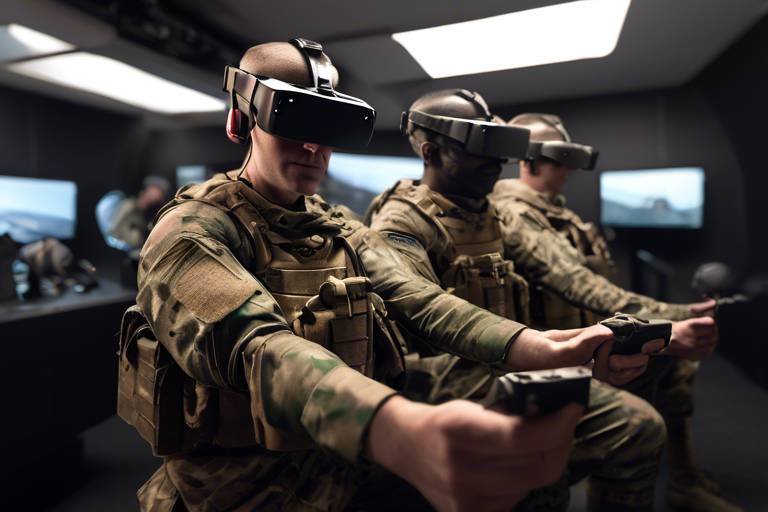The Benefits of VR in Supporting Military Transition Programs
In today's fast-paced world, transitioning from military to civilian life can feel like stepping into a completely new universe. For many veterans, this shift is not just a change in job title; it's a profound transformation that can come with its own set of challenges. Virtual Reality (VR) technology emerges as a powerful ally in this journey, offering innovative solutions that can significantly enhance military transition programs. By providing immersive experiences, VR not only aids in skill development but also offers emotional support and fosters a sense of community among veterans. Imagine donning a VR headset and being transported into a realistic simulation where you can practice job skills, engage in therapeutic exercises, or connect with fellow veterans. This is not just a futuristic dream; it's a reality that can make a substantial difference in the lives of those who have served.
One of the standout benefits of VR technology is its ability to create realistic training simulations. These simulations allow veterans to practice civilian job skills in a safe, controlled environment. Picture this: a veteran stepping into a virtual office space, navigating through tasks, and interacting with virtual colleagues. This immersive experience helps to boost their confidence and preparedness for real-world situations. In fact, studies have shown that training in a VR setting can enhance memory retention and skill acquisition. The ability to repeat scenarios until they feel second nature can be a game-changer for veterans who may feel apprehensive about entering the workforce.
Transitioning to civilian life can be emotionally taxing, and that's where VR steps in to provide emotional resilience. By immersing veterans in carefully crafted scenarios, VR can help them process their experiences and develop effective coping strategies for stress and anxiety. Imagine a virtual environment that simulates a crowded marketplace, allowing veterans to confront their feelings of discomfort in a controlled setting. This gradual exposure can lead to significant improvements in emotional well-being.
One of the most promising applications of VR is in the realm of exposure therapy for PTSD. This innovative approach allows veterans to confront their traumatic experiences in a safe environment, ultimately leading to improved mental health outcomes. Through VR, veterans can face their fears head-on, whether it's a crowded space or a specific sound that triggers their anxiety. Over time, this exposure helps to desensitize them to their triggers, making it easier to navigate everyday life.
VR can recreate real-life situations that veterans may find challenging. For instance, they might encounter a virtual scenario where they have to give a presentation or engage in a social gathering. By facing these situations gradually, veterans can build resilience and reduce anxiety over time. This gradual exposure is akin to dipping your toes into a pool before jumping in—allowing you to acclimate to the water before fully immersing yourself.
The immersive nature of VR encourages veterans to engage more fully in therapeutic processes. Traditional therapy can sometimes feel distant or disconnected, but VR brings an element of realism that makes treatment more effective and enjoyable. Veterans are more likely to participate actively when they feel like they're part of a dynamic, interactive experience rather than sitting in a sterile office.
In addition to emotional support, VR offers innovative solutions for skill development. Veterans can learn new trades or refine existing skills through interactive platforms that make learning engaging and effective. Whether it's practicing coding in a virtual tech environment or honing culinary skills in a simulated kitchen, the possibilities are endless. This hands-on approach can lead to better retention of skills and greater confidence when entering the job market.
One of the often-overlooked aspects of transitioning to civilian life is the need for community and support. VR provides a unique platform for veterans to connect with peers, fostering a sense of camaraderie that can ease the transition process. Imagine a virtual space where veterans can gather, share experiences, and support one another. This sense of belonging is crucial for mental health and can significantly impact a veteran's ability to adapt to civilian life.
VR platforms can host peer support groups where veterans share experiences and advice. This creates a supportive network that promotes healing and camaraderie. The beauty of this setup is that it transcends geographical barriers, allowing veterans from different locations to come together and form meaningful connections.
Additionally, veterans can engage in virtual mentorship programs, connecting with experienced professionals who can guide them through the transition process. This mentorship can provide valuable insights into civilian careers and help veterans navigate the complexities of job searching and professional development.
Finally, one of the most significant advantages of VR technology is its ability to accommodate various disabilities. This ensures that all veterans have access to transition resources and support, regardless of their physical limitations. By tailoring VR experiences to meet individual needs, we can create a truly inclusive environment where every veteran has the opportunity to thrive in civilian life.
- What is VR? VR, or Virtual Reality, is a simulated experience that can be similar to or completely different from the real world.
- How can VR help veterans? VR can assist veterans in developing job skills, building emotional resilience, and fostering community connections.
- Is VR accessible for all veterans? Yes, VR technology can be tailored to accommodate various disabilities, ensuring inclusivity.
- What types of skills can veterans learn through VR? Veterans can learn a wide range of skills, from technical trades to soft skills like communication and teamwork.

Enhanced Training Simulations
In today's fast-paced world, transitioning from military to civilian life can feel like stepping into an entirely different universe. powered by Virtual Reality (VR) are revolutionizing this transition, providing veterans with a unique opportunity to practice and refine their skills in a safe and controlled environment. Imagine being able to step into a virtual office or a bustling retail space, where you can interact with colleagues or customers without the pressure of real-world consequences. This is not just a dream; it’s the reality that VR technology is bringing to the forefront of military transition programs.
One of the most significant benefits of VR training simulations is their realism. These simulations are designed to mimic real-life situations that veterans will encounter in civilian jobs. For instance, a veteran interested in a career in healthcare can practice patient interactions in a virtual hospital, while someone looking to enter the construction field can navigate a virtual job site. This kind of immersive experience not only builds confidence but also enhances skill retention. Veterans can repeatedly practice scenarios until they feel comfortable and competent, making the transition smoother and less daunting.
Moreover, VR training simulations provide a risk-free environment where mistakes are part of the learning process. In traditional training settings, the fear of failure can often hinder performance. However, in a VR setting, veterans can experiment, make mistakes, and learn from them without any real-world repercussions. This aspect of VR is particularly beneficial for those who may be struggling with self-doubt or anxiety about entering a new career field. The ability to learn at their own pace allows veterans to build their skills incrementally, ensuring they are well-prepared when it's time to step into the real world.
Additionally, VR can tailor training programs to meet the specific needs of each veteran. For example, if a veteran has prior experience in a particular field but lacks certain skills, VR can provide targeted simulations that focus on those areas. This personalized approach not only saves time but also ensures that veterans are not overwhelmed by information that may not be relevant to their career goals. As a result, they can focus on honing the skills that will make them competitive in the job market.
To illustrate the effectiveness of VR training simulations, consider the following table that compares traditional training methods with VR training:
| Aspect | Traditional Training | VR Training |
|---|---|---|
| Realism | Limited; often theoretical | Highly realistic; immersive |
| Risk of Failure | High; real-world consequences | Low; safe environment |
| Customization | One-size-fits-all | Tailored to individual needs |
| Skill Retention | Variable; depends on engagement | Higher; engaging and interactive |
In summary, enhanced training simulations through VR technology are transforming the way veterans prepare for civilian careers. By providing a realistic, risk-free, and customizable training environment, VR not only boosts confidence and skill retention but also empowers veterans to tackle their new challenges head-on. As we continue to explore the potential of VR in military transition programs, it’s clear that this innovative technology holds the key to unlocking a smoother, more successful transition for our veterans.

Emotional Resilience Building
Building emotional resilience is crucial for veterans transitioning to civilian life. The journey can often feel like navigating through a dense fog—uncertain, overwhelming, and at times, isolating. Virtual Reality (VR) steps in as a beacon of hope, illuminating the path toward emotional healing. By immersing veterans in carefully crafted scenarios, VR provides a unique opportunity for them to confront their feelings and experiences in a safe and controlled environment. This approach not only helps in processing their past but also equips them with essential coping strategies for managing stress and anxiety.
Imagine walking through a virtual park where you can engage in calming activities, or participating in a simulated job interview that allows you to practice responses to challenging questions. These immersive experiences are designed to foster a sense of control and familiarity, which can be incredibly empowering. Through repeated exposure to these scenarios, veterans can gradually desensitize themselves to triggers that may evoke negative emotions, thereby enhancing their emotional resilience.
One of the most significant applications of VR in emotional resilience building is its role in exposure therapy for veterans dealing with PTSD. Traditional therapy can sometimes feel daunting, but VR transforms this process into a more manageable experience. By simulating environments that may trigger PTSD symptoms, veterans can confront their fears in a controlled setting. This gradual exposure allows them to process their experiences without the immediate pressures of the real world, leading to more profound healing.
VR technology excels at recreating realistic scenarios that resonate deeply with veterans. For instance, a veteran might find themselves reliving a moment from their service, but this time, they have the tools and support to navigate their emotions effectively. Over time, these experiences can help them build resilience, allowing them to face their fears with greater confidence. The beauty of this approach lies in its ability to provide a safe space for healing, where veterans can learn to manage their reactions and emotions.
The immersive nature of VR not only enhances the therapeutic process but also makes it more engaging. Veterans often report feeling more present and involved during VR sessions compared to traditional therapy. This heightened engagement can lead to better outcomes, as they are more likely to participate actively in their healing journey. By transforming therapy into an interactive experience, VR encourages veterans to embrace the process rather than shy away from it.
In summary, the integration of VR into emotional resilience building offers veterans a powerful tool to navigate their transition to civilian life. By providing immersive experiences that foster coping strategies and allow for gradual exposure to triggers, VR supports veterans in developing the emotional strength needed to thrive. As they embark on this journey, they are not just reclaiming their lives; they are building a foundation for a brighter, more resilient future.
- How does VR help veterans with PTSD? VR provides a safe environment for exposure therapy, allowing veterans to confront their fears and manage symptoms more effectively.
- Can VR be used for skill development? Yes, VR offers innovative training simulations that help veterans learn new skills or refine existing ones in a controlled setting.
- Is VR accessible for all veterans? VR technology can be tailored to accommodate various disabilities, ensuring inclusivity in transition programs.
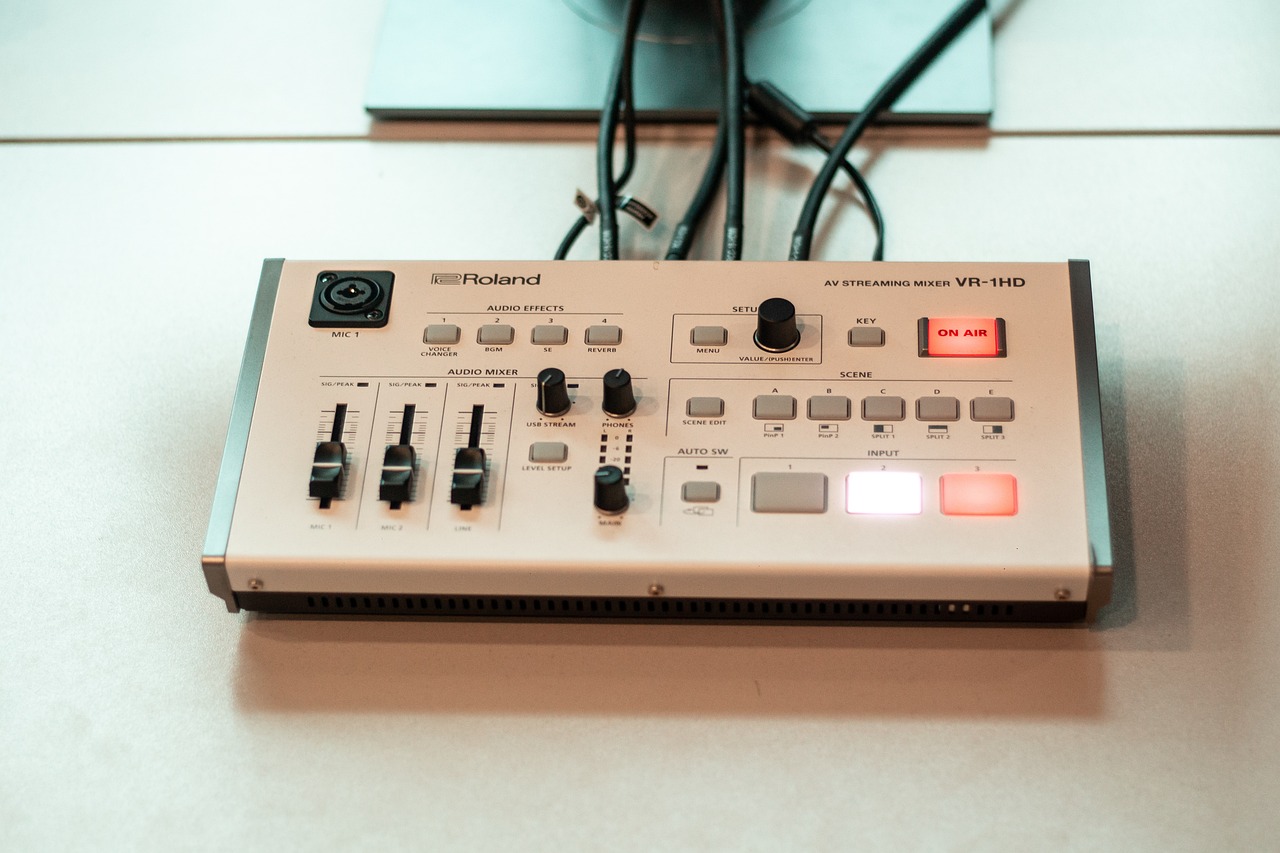
Exposure Therapy for PTSD
When it comes to addressing the lingering effects of Post-Traumatic Stress Disorder (PTSD), exposure therapy has emerged as a powerful tool, especially for veterans. This innovative approach utilizes the immersive capabilities of Virtual Reality (VR) to create controlled environments where veterans can confront their fears and traumatic memories. Imagine being able to walk through a simulation of a challenging scenario without any real-world consequences; that’s the essence of VR exposure therapy.
In traditional therapy settings, veterans often find it difficult to articulate their experiences. However, VR allows for a more dynamic interaction with these memories. By immersing them in a realistic scenario, therapists can guide veterans through their feelings and reactions, helping them to process their trauma in a safe space. This method not only fosters emotional healing but also builds a sense of control over their experiences, which is often lost during traumatic events.
One of the most significant advantages of VR exposure therapy is its ability to recreate realistic scenarios. For instance, a veteran who experienced combat may find themselves in a virtual battlefield, where they can gradually face their fears in a controlled manner. This gradual exposure helps in desensitizing them to triggers that may cause anxiety or panic. Over time, as they confront these situations, veterans can develop coping strategies that are crucial for managing their PTSD symptoms in everyday life.
Additionally, the therapeutic engagement offered by VR is unparalleled. The immersive nature of these experiences captivates veterans, making them more likely to participate actively in their treatment. Think of it as a video game for therapy; when veterans are engaged, they are more likely to confront their fears and work through their emotions. This engagement can lead to improved mental health outcomes, which is the ultimate goal of any therapeutic intervention.
To illustrate the effectiveness of VR exposure therapy, consider the following table that summarizes key benefits:
| Benefit | Description |
|---|---|
| Controlled Environment | Veterans can confront fears without real-world risks. |
| Gradual Exposure | Helps desensitize veterans to triggers over time. |
| Enhanced Engagement | Immersive experiences encourage active participation in therapy. |
| Emotional Processing | Facilitates better articulation of feelings and experiences. |
As veterans navigate their transition to civilian life, the integration of VR exposure therapy into their treatment plans can make a world of difference. By providing a safe space to confront their trauma, VR not only aids in healing but also empowers veterans to reclaim their lives. It’s like giving them the tools to rewrite their narrative, transforming painful memories into a path toward resilience and recovery.
- What is exposure therapy? Exposure therapy is a psychological treatment that helps individuals confront their fears and anxieties in a controlled environment.
- How does VR enhance exposure therapy? VR creates realistic simulations that allow individuals to face their fears safely, making the therapy more effective.
- Is VR exposure therapy suitable for all veterans? While many veterans can benefit from VR therapy, it's essential to consult with a mental health professional to determine individual suitability.
- What are the potential outcomes of VR exposure therapy? Many veterans experience reduced symptoms of PTSD, improved emotional regulation, and enhanced coping strategies.

Realistic Scenarios
Imagine stepping into a world where the challenges of civilian life are simulated with astonishing realism. Virtual Reality (VR) makes this possible by recreating real-life situations that veterans may encounter after their service. This technology allows veterans to face their fears and anxieties in a controlled environment, where they can practice responding to various scenarios without the pressure of real-world consequences.
For instance, a veteran might find themselves in a simulated job interview, where they can rehearse their responses and body language. This experience is not just about practicing answers; it’s about building confidence and reducing the fear of the unknown. By engaging in these realistic scenarios, veterans develop crucial skills that translate directly to their future workplaces. They learn how to interact with colleagues, manage stress, and navigate the complexities of civilian employment.
Moreover, VR can simulate everyday situations that might seem trivial but can be daunting for veterans adjusting to civilian life. Consider the following scenarios:
- Attending a social gathering where they need to network.
- Managing finances in a virtual bank setting.
- Handling conflict resolution in a workplace environment.
These immersive experiences allow veterans to gradually confront their fears, helping them to build resilience over time. Each scenario is designed to be as lifelike as possible, utilizing advanced graphics and sound effects to create an engaging atmosphere. This immersion is crucial; it transforms the learning process into a dynamic experience rather than a passive one.
Additionally, the feedback provided during these simulations is invaluable. After each scenario, veterans receive constructive criticism and tips on how to improve their performance. This iterative process not only enhances their skill set but also fosters a sense of achievement and progress. As they navigate through various challenges, they learn to adapt and overcome obstacles, which is essential for their transition to civilian life.
In summary, the use of realistic scenarios in VR serves as a powerful tool for veterans. By practicing in a safe space, they can develop the skills, confidence, and emotional resilience needed to thrive in their post-military lives. The journey from military to civilian life can be daunting, but with the help of VR technology, veterans are better equipped to face the challenges ahead.
Q: How does VR help veterans with PTSD?
A: VR provides controlled exposure therapy, allowing veterans to confront their PTSD triggers in a safe environment, which can lead to improved coping strategies and emotional resilience.
Q: Are VR programs accessible for veterans with disabilities?
A: Yes, VR technology can be customized to accommodate various disabilities, ensuring that all veterans can benefit from transition resources and support.
Q: Can VR simulations be tailored to individual needs?
A: Absolutely! Many VR programs are designed to be adaptable, allowing veterans to focus on specific scenarios that are most relevant to their personal experiences and challenges.
Q: How effective is VR compared to traditional training methods?
A: Research has shown that VR can enhance learning outcomes by providing immersive, interactive experiences that engage veterans more deeply than traditional training methods.
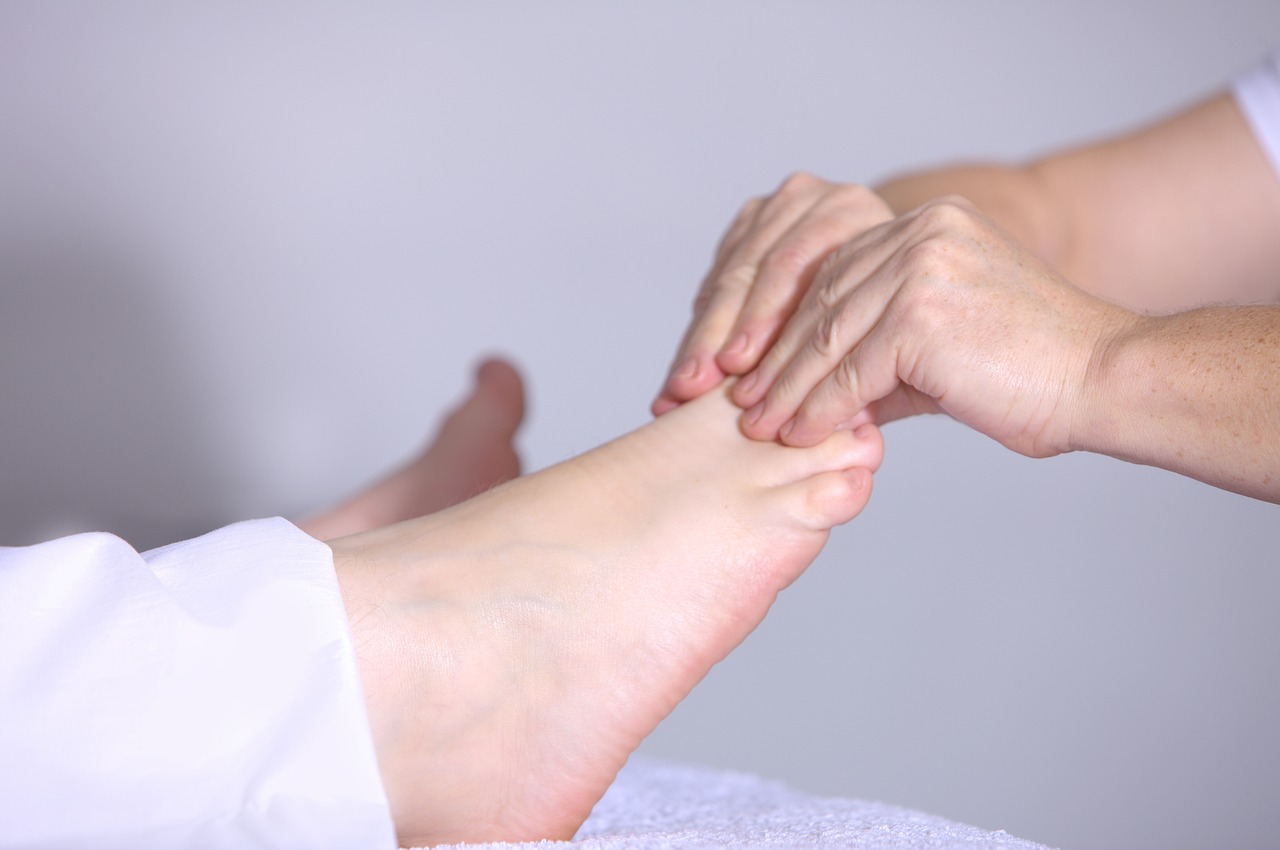
Therapeutic Engagement
When it comes to mental health treatment, traditional methods can sometimes feel a bit detached or even intimidating for veterans. This is where Virtual Reality (VR) steps in, transforming the therapeutic landscape into something far more engaging and interactive. Imagine being able to step into a virtual world where you can not only confront your fears but also do so in a way that feels safe and controlled. That’s the magic of VR in therapy!
One of the most significant advantages of VR is its ability to foster . Veterans who might typically shy away from discussing their experiences often find themselves more willing to open up when immersed in a VR environment. The immersive nature of VR allows them to experience scenarios that reflect their real-life challenges without the overwhelming pressure of a traditional therapy session. It's like having a personal space where they can explore their emotions and thoughts at their own pace.
Moreover, VR can simulate various environments, from bustling city streets to quiet, serene landscapes. This versatility means that therapy can be tailored to the individual’s needs, allowing veterans to gradually face their triggers in a safe setting. For instance, a veteran dealing with anxiety in crowded places might start in a virtual café, where they can practice coping strategies before transitioning to more crowded environments.
Another remarkable aspect of VR is its capacity to make therapy feel less like a chore and more like an adventure. This gamified approach to mental health care can significantly enhance a veteran's willingness to participate in their treatment. They can engage in scenarios that challenge them while also providing a sense of accomplishment upon overcoming these virtual hurdles. This sense of achievement can lead to a boost in confidence, proving that they can tackle challenges both in the virtual world and in real life.
In addition, the interactive elements of VR can facilitate better communication between veterans and their therapists. By experiencing scenarios together in a virtual space, therapists can gain insights into their patients' thought processes and emotional responses, allowing for more tailored and effective treatment. This collaborative approach can create a stronger therapeutic alliance, which is crucial for successful outcomes.
To summarize, the incorporation of VR into therapeutic practices offers a transformative way for veterans to engage with their mental health. By creating a safe, immersive, and interactive environment, VR not only enhances the effectiveness of therapy but also makes it a more enjoyable experience. This engagement can lead to significant improvements in emotional resilience and overall well-being.
- What is VR therapy? VR therapy uses virtual reality technology to create immersive environments for therapeutic purposes, helping individuals confront fears, practice skills, and engage in their treatment more effectively.
- How does VR help veterans? VR helps veterans by providing a safe space to process their experiences, build coping strategies, and improve emotional resilience through immersive simulations and interactive scenarios.
- Is VR therapy effective for PTSD? Yes, VR therapy has shown promising results in treating PTSD by allowing veterans to confront their trauma in a controlled setting, leading to improved mental health outcomes.
- Can anyone use VR therapy? VR therapy can be tailored to accommodate various disabilities and needs, making it accessible to a wide range of individuals seeking support.

Skill Development and Retraining
In today's fast-paced world, skill development and retraining are crucial for anyone looking to thrive in a new career, especially for veterans transitioning from military to civilian life. Virtual Reality (VR) offers a revolutionary way to facilitate this process, creating immersive environments where veterans can learn and practice new skills without the pressure of a traditional classroom setting. Imagine stepping into a virtual workshop, where the tools and equipment are at your fingertips, and you can practice as often as you need until you feel confident. This is not just a dream; it’s the reality that VR technology brings to skill development.
One of the most significant advantages of using VR for skill training is the ability to simulate real-world scenarios. For instance, a veteran interested in becoming an electrician can enter a virtual environment that mimics a residential home. They can practice wiring, troubleshooting, and even customer interactions—all in a safe space where mistakes are part of the learning process. This hands-on experience is invaluable, as it allows veterans to build a portfolio of skills that they can showcase to potential employers.
Moreover, the interactive nature of VR keeps learners engaged, making the process enjoyable and less intimidating. Traditional learning methods can sometimes feel monotonous, but with VR, veterans can experience a variety of scenarios, from the comfort of their homes. They can switch between roles, such as a technician or a manager, and understand the dynamics of different positions in a way that textbooks simply cannot provide.
To further illustrate the benefits of VR in skill development, consider the following table that highlights some of the key skills that can be enhanced through VR training:
| Skill Area | VR Application | Benefits |
|---|---|---|
| Healthcare | Virtual patient simulations | Improves diagnostic skills and bedside manner |
| Construction | Site management training | Enhances safety awareness and project management |
| Customer Service | Role-playing scenarios | Builds communication skills and conflict resolution |
| IT and Programming | Code debugging exercises | Strengthens problem-solving and technical skills |
This table illustrates just a few of the many fields where VR can play a pivotal role in skill enhancement. The flexibility of VR also means that training can be customized to fit the specific needs of each veteran, allowing for a personalized approach that traditional methods often lack. Whether it’s mastering a new software program or learning a trade, the opportunities are vast and varied.
In conclusion, VR is not just a tool for entertainment; it’s a powerful ally in the journey of skill development and retraining for veterans. By providing a safe, engaging, and realistic training environment, VR helps veterans gain the confidence and competence they need to thrive in civilian careers. The future of military transition programs looks promising, and with the integration of VR technology, veterans can look forward to a smoother, more successful transition.
- What is Virtual Reality (VR)?
VR is a simulated experience that can be similar to or completely different from the real world, allowing users to interact with 3D environments. - How can VR help veterans transition to civilian life?
VR offers immersive training, emotional support, and skill development, making it easier for veterans to adapt to new careers. - Is VR training effective for all skill types?
Yes, VR can be tailored to various fields, including healthcare, construction, IT, and more. - Can VR accommodate veterans with disabilities?
Absolutely! VR technology can be customized to ensure accessibility for all veterans.

Networking and Community Building
Networking and community building are essential elements in the journey of veterans transitioning to civilian life. The shift from military to civilian environments can often feel overwhelming, and that’s where Virtual Reality (VR) steps in to create a bridge. Imagine a space where veterans can connect, share their stories, and support one another—all from the comfort of their own homes. VR platforms provide a unique opportunity to foster these connections, breaking down geographical barriers and creating a sense of belonging.
In these virtual environments, veterans can participate in various activities that promote camaraderie and support. For instance, VR can host peer support groups where individuals share their experiences, challenges, and triumphs. This not only helps in normalizing their feelings but also builds a network of understanding and empathy. Engaging in these groups allows veterans to realize they are not alone in their struggles, and it can be incredibly comforting to hear from others who have walked a similar path.
Furthermore, VR facilitates mentorship opportunities. Veterans can connect with seasoned professionals who have successfully navigated the transition to civilian life. These mentors can provide invaluable insights into career choices, interview techniques, and workplace culture. Just think about it: having someone who has been in your shoes, guiding you through the intricate maze of job applications and networking events. It’s like having a personal GPS for your career journey!
One of the standout features of VR is its ability to create immersive social experiences. Whether it's participating in virtual workshops, attending career fairs, or joining interest-based groups, the interactive nature of VR makes these experiences engaging and memorable. Veterans can practice their networking skills in a low-pressure environment, helping them to build confidence before stepping into real-world situations.
Moreover, the inclusive nature of VR ensures that veterans from all walks of life can participate. This technology can be tailored to accommodate various disabilities, making it accessible for everyone. In a world where many veterans might feel isolated due to physical limitations, VR serves as a powerful tool to ensure that no one is left behind. It’s not just about providing resources; it’s about creating a community where every veteran feels valued and included.
In summary, the potential for through VR is immense. By leveraging this technology, veterans can create meaningful connections, gain support from peers and mentors, and ultimately ease their transition into civilian life. It’s a brave new world where technology meets empathy, and the possibilities are as vast as the virtual landscapes they explore.
- How can VR help veterans with networking?
VR creates immersive environments where veterans can connect and engage with peers, facilitating networking opportunities that may not be available in traditional settings. - Are there specific VR platforms designed for veterans?
Yes, there are several VR platforms tailored to veterans, offering resources, support groups, and mentorship programs. - Can VR accommodate veterans with disabilities?
Absolutely! VR technology can be customized to ensure accessibility for veterans with various physical limitations.
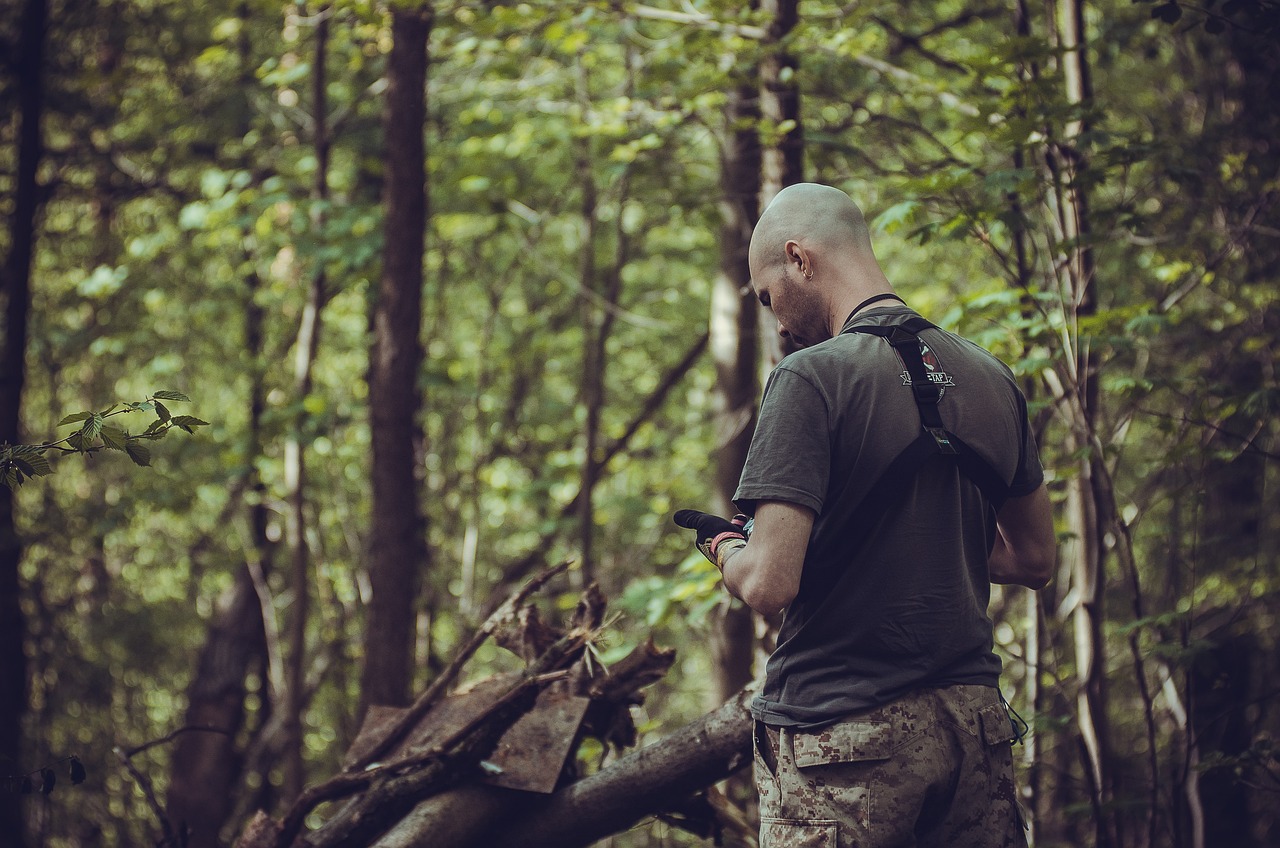
Peer Support Groups
Peer support groups in Virtual Reality (VR) are revolutionizing the way veterans connect and share their experiences. Imagine stepping into a virtual room filled with individuals who truly understand what you’ve been through. This is not just a fantasy; it’s a reality made possible by VR technology. These groups allow veterans to engage with one another in a safe and supportive environment, where they can share their stories, challenges, and triumphs. The beauty of these groups lies in their ability to foster real connections among veterans who might feel isolated in their transition to civilian life.
In a VR setting, participants can interact as avatars, which can help reduce the anxiety that often accompanies face-to-face interactions. This anonymity can encourage more open and honest discussions, allowing veterans to express their feelings and seek advice without the fear of judgment. Additionally, the immersive nature of VR makes these interactions feel more genuine and impactful, as participants can engage in activities together, like virtual games or guided discussions, that strengthen their bonds.
Moreover, these peer support groups can be tailored to address specific issues veterans face, such as PTSD, job transitions, or family dynamics. By focusing on particular themes, these sessions can provide targeted support and resources. For example, a group dedicated to discussing career transitions might invite guest speakers who have successfully navigated the job market after military service, sharing valuable insights and strategies. This not only enriches the conversation but also empowers participants with practical knowledge.
To illustrate the effectiveness of these peer support groups, consider the following table that outlines some key benefits:
| Benefit | Description |
|---|---|
| Emotional Support | Veterans can share their experiences and feelings, providing comfort and understanding to one another. |
| Resource Sharing | Participants can exchange information about job opportunities, educational resources, and mental health services. |
| Skill Building | Through discussions and activities, veterans can develop new skills or enhance existing ones, making them more competitive in the job market. |
| Community Engagement | These groups foster a sense of belonging and community, which is crucial for mental health and well-being. |
In summary, peer support groups in VR are not just a trend; they are a vital resource for veterans transitioning to civilian life. By providing a platform for sharing experiences, offering emotional support, and facilitating resource exchange, these groups play a crucial role in the healing process. They remind veterans that they are not alone in their journey and that together, they can navigate the challenges of life after service.
- What are peer support groups in VR? Peer support groups in VR are virtual spaces where veterans can connect, share experiences, and provide mutual support.
- How do these groups help veterans? They help veterans by offering emotional support, resource sharing, and community engagement, making the transition to civilian life smoother.
- Can anyone join these groups? Yes, these groups are typically open to all veterans, regardless of their background or experiences.
- Do I need special equipment to participate? Most VR platforms require a VR headset, but some may also be accessible via standard computers or mobile devices.

Mentorship Opportunities
In the journey of transitioning from military to civilian life, mentorship can play a transformational role. Virtual Reality (VR) platforms are stepping up to bridge the gap between veterans and seasoned professionals, creating a unique space for . Imagine being able to connect with someone who has already walked the path you are about to embark on, all while immersed in a virtual environment that feels both safe and engaging. This not only eases the anxiety associated with seeking guidance but also fosters a sense of community.
Through VR, veterans can engage in interactive mentorship programs, where they can participate in simulated work environments tailored to their future careers. This kind of immersive experience allows them to ask questions, seek advice, and learn from professionals in real-time, just as if they were shadowing them in person. Moreover, the anonymity that VR can provide may encourage more open dialogue about challenges and fears that veterans face during their transition.
One of the most significant benefits of these virtual mentorship programs is the ability to connect with mentors from various industries across the globe. Veterans can choose to engage with individuals who have expertise in fields they are interested in, whether it be technology, healthcare, business, or creative arts. This diversity in mentorship not only broadens their understanding of different career paths but also equips them with valuable insights that are crucial for making informed career decisions.
Additionally, the structured nature of VR mentorship programs often includes scheduled sessions, follow-up discussions, and even assessments to track progress. This level of organization can help veterans stay motivated and accountable, ensuring they make the most of their mentorship experience. By developing a personalized action plan with their mentors, veterans can set clear goals and milestones to achieve during their transition.
In summary, VR mentorship opportunities provide veterans with an innovative platform to connect, learn, and grow. By leveraging technology, these programs not only enhance the transition experience but also cultivate a supportive network that can lead to lasting professional relationships.
- What is Virtual Reality mentorship?
Virtual Reality mentorship involves using VR technology to connect veterans with experienced professionals who guide them through their career transitions in an immersive environment. - How can VR help with my job search?
VR can provide realistic simulations where you can practice job-related skills, receive feedback from mentors, and gain insights into various industries. - Are VR mentorship programs accessible to all veterans?
Yes, VR technology can be tailored to accommodate various disabilities, ensuring inclusivity for all veterans seeking mentorship. - What types of industries can I explore through VR mentorship?
Veterans can connect with mentors across a wide range of industries, including technology, healthcare, business, and creative fields.
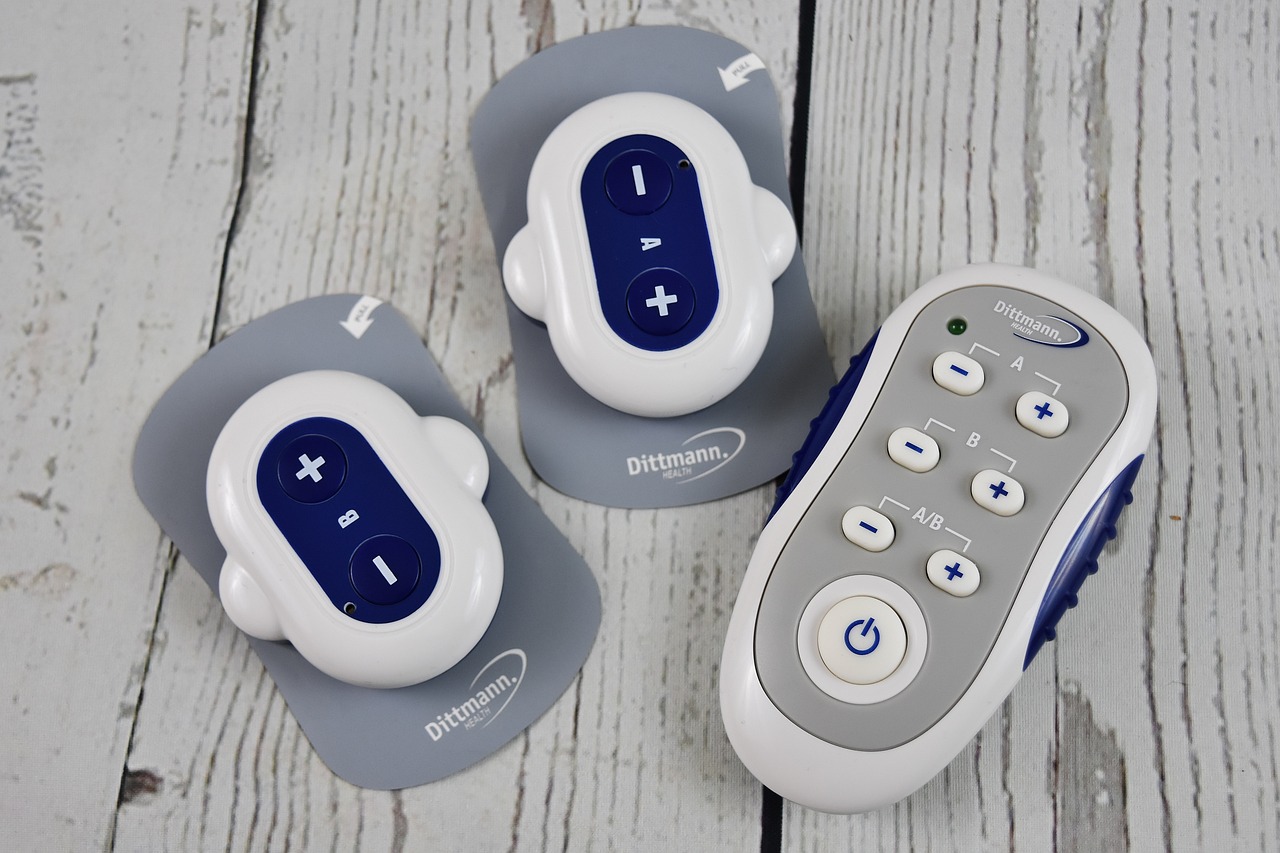
Accessibility and Inclusivity
In today’s rapidly evolving technological landscape, accessibility and inclusivity are paramount, especially when it comes to supporting our veterans during their transition to civilian life. Virtual Reality (VR) technology stands out as a powerful tool that can be customized to meet the diverse needs of all veterans, including those with disabilities. Imagine a world where every veteran, regardless of their physical limitations, can access valuable resources and training through immersive experiences. This is not just a dream; it's becoming a reality with VR.
One of the most significant advantages of VR is its ability to create customizable experiences. For instance, veterans with mobility challenges can engage in simulations that allow them to participate in job training or therapy sessions from the comfort of their homes. This is particularly beneficial for those who may find it difficult to travel to traditional training facilities or support groups. By leveraging VR, we can break down the physical barriers that often hinder access to essential resources.
Moreover, the design of VR applications can be tailored to accommodate various sensory needs. For example, veterans with hearing impairments can benefit from visual cues and subtitles, while those with visual impairments can utilize haptic feedback and audio descriptions to navigate virtual environments. This level of customization ensures that all veterans can fully engage with the content, making their transition smoother and more effective.
To illustrate the potential of VR in enhancing accessibility, consider the following table showing various disabilities and how VR can address them:
| Disability Type | VR Adaptation |
|---|---|
| Mobility Impairments | Remote access to training and therapy sessions |
| Hearing Impairments | Visual cues and subtitles in VR experiences |
| Visual Impairments | Haptic feedback and audio descriptions |
| Cognitive Disabilities | Simple navigation and guided instructions |
Additionally, VR fosters a sense of community among veterans, which is crucial for emotional support during their transition. Virtual environments can host group sessions, where veterans can interact with one another, share experiences, and build connections. This not only helps in reducing feelings of isolation but also promotes healing through shared stories and camaraderie.
In conclusion, the potential of VR in promoting accessibility and inclusivity for veterans is immense. By customizing experiences to meet the needs of individuals with various disabilities, we can ensure that every veteran has the opportunity to benefit from transition programs. This technology not only empowers veterans but also paves the way for a more inclusive society where everyone has the chance to thrive.
- What is Virtual Reality (VR)? VR is a technology that creates a simulated environment, allowing users to immerse themselves in a 3D space.
- How can VR help veterans? VR can provide realistic training, emotional support, and community building opportunities for veterans transitioning to civilian life.
- Is VR accessible for veterans with disabilities? Yes, VR can be tailored to accommodate various disabilities, ensuring all veterans can access training and support.
- What types of skills can veterans learn through VR? Veterans can learn a wide range of skills, including job-specific training, emotional resilience techniques, and social interaction skills.
Frequently Asked Questions
- How does Virtual Reality enhance military transition programs?
Virtual Reality (VR) enhances military transition programs by providing immersive training simulations that help veterans practice civilian job skills. This controlled environment boosts their confidence and prepares them for real-world situations, making the transition smoother and more manageable.
- Can VR help with emotional resilience for veterans?
Absolutely! VR can facilitate emotional resilience by immersing veterans in scenarios that help them process their experiences. This technology allows them to develop coping strategies for stress and anxiety, ultimately leading to better emotional well-being.
- What role does VR play in exposure therapy for PTSD?
VR is a game-changer in exposure therapy for PTSD. It allows veterans to confront and manage their symptoms in a safe, controlled setting, gradually recreating real-life situations. This process helps build resilience and reduces anxiety over time, leading to improved mental health outcomes.
- How does VR support skill development for veterans?
VR offers innovative solutions for skill development by enabling veterans to learn new trades or refine existing skills through interactive and engaging platforms. This hands-on approach makes learning enjoyable and effective, preparing them for various career opportunities.
- What networking opportunities does VR provide for veterans?
VR platforms create unique opportunities for veterans to connect with peers, fostering a sense of community and support. They can participate in peer support groups where experiences and advice are shared, promoting healing and camaraderie during their transition to civilian life.
- Are there mentorship programs available in VR for veterans?
Yes! Veterans can engage in virtual mentorship programs that connect them with experienced professionals. These mentors provide guidance through the transition process, offering valuable insights into civilian careers and helping veterans navigate their new paths.
- Is VR technology accessible for veterans with disabilities?
Definitely! VR technology can be tailored to accommodate various disabilities, ensuring that all veterans have access to transition resources and support. This inclusivity allows everyone, regardless of physical limitations, to benefit from the advantages that VR offers.


